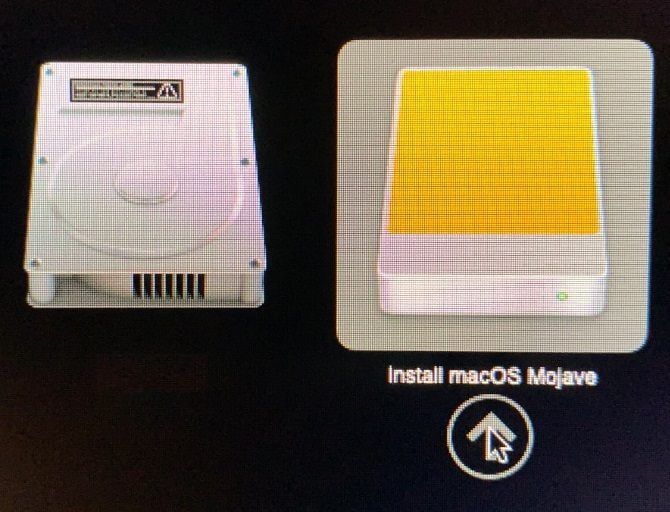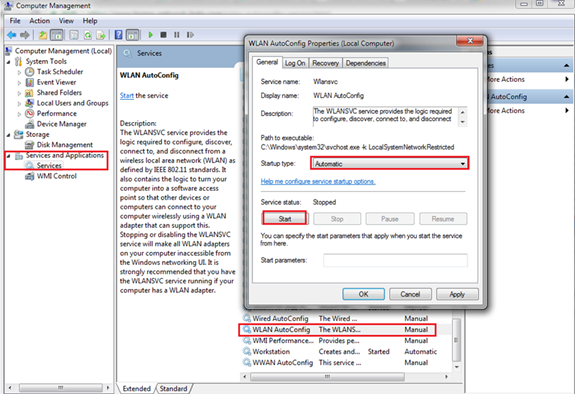Insert the disc or USB drive into the computer that can’t boot properly and boot from the device. On Windows 8 or 10, click the “Repair your computer” option instead of “Install now” in the installer screen. Then select Troubleshoot Startup Repair to run startup repair.
- Startup Mac From Usb
- Mac Startup From Usb Drive
- Startup Mac From External Usb Hard Drive
- Startup Mac From Usb Stick
- How To Startup Mac From Usb
Before we get into the software fixes, let’s start with the simplest solution of all: restarting your Mac. Switch the Mac off and back on again. You’ll be surprised at how many problems a quick restart solves.
- The options available in Startup Security Utility vary depending on your Mac model. See the Apple Support articles About Startup Security Utility and About the Apple T2 Security Chip. Startup Disk: Set the startup disk for your Mac. Choose Apple menu Startup Disk. To return to the Recovery app, choose Startup Disk Quit Startup Disk.
- Learn about Mac on CNET. Read the most important product reviews and follow the tech news and more.
- Listen for the chime sound and let the Mac boot up as usual. Uninstall potentially conflicting apps. If the USB ports not working on your MacBook Pro or iMac is a recent issue and there doesn’t seem to be any problem with USB devices, it could be that an app is conflicting with USB functionality.
Next, check the USB device. There’s a chance that it could have failed, particularly so if you’re using a cheaper cable. Inspect the device visually, looking for damage to the connector and any signs of frayed wiring. If there is no apparent damage, take two different USB devices and test them against different ports. If the devices aren’t working on one or all of the ports it’s more likely to be an issue with your Mac and not the device.
A USB device that works on one port but not another is a sign of a faulty port. If this is the case, the only real solution is to contact an authorized Mac specialist for a hardware diagnostics test and have the port repaired.

If the device doesn’t work in any of your ports, then continue reading for some potential fixes.

What to do if Mac USB devices are not working
All of your Mac or MacBook USBs not working is actually better news than one failing. It’s unlikely that all of your ports would fail at once which means the fix is probably an easy one.
Here are three things to try, starting with the most common fix.
Make bootable usb mac mojave. A bootable USB is super convenient to have on hand if you need to install or repair an operating system on your computer. You can easily make your own bootable USB that’s equipped with the operating system of your choosing. Whether you’re using Windows or a Mac, we’ll walk you through the process step-by-step. Much like prior versions of Mac OS, you can easily create a bootable install drive for MacOS Mojave 10.14. These boot install drives allow for things like easily formatting a Mac to perform a clean install of macOS Mojave, installing macOS Mojave onto multiple Macs without them each having to download the installer, or even as a troubleshooting tool since it can be booted from by any.
1. Reset the SMC
Resetting the SMC (System Management Controller) is a simple fix that cures a wide range of hardware issues. How this is done depends on whether you’re using a MacBook or Mac desktop.
Resetting the SMC on a MacBook
- Shutdown your MacBook.
- Connect the power adapter.
- Hold Shift+Control+Option and the Power button at the same time.
- Release all the keys at the same time.
- Let your MacBook boot up as usual and the SMC will be reset.
Resetting the SMC on an iMac, Mac mini, or Mac Pro
- Shut down your Mac.
- Disconnect the power cord.
- Press and hold the Power button for 5 seconds and release.
- Reconnect the power cord and switch the Mac back on.
2. Check for updates
Outdated firmware and software results in various hardware issues, including.. Yep — Mac USB ports not working.
Check for system updates by opening the App Store and clicking on the Updates tab. If updates are available, click on the Update button next to each application that you want to install.
Macos big sur beta 11.2. MacOS Big Sur was announced during the WWDC keynote speech on June 22, 2020, and it was made available to the general public on November 12, 2020. This is the first time the major version number of the operating system has been incremented since the Mac OS X Public Beta in 2000. MacOS Big Sur elevates the most advanced desktop operating system in the world to a new level of power and beauty. Experience Mac to the fullest with a refined new design. Enjoy the biggest Safari update ever. Discover new features for Maps and Messages. And get even more transparency around your privacy. Troubleshooting macOS Big Sur Wi-Fi Problems. Regardless of whether you own a MacBook, MacBook Pro, MacBook Air, Mac mini, iMac, or Mac Pro, you can follow these basic troubleshooting methods whenever you’re facing any connectivity-related issues on your macOS Big Sur machine. Therefore, keep your macOS Big Sur system up to date. Just be sure to backup your Mac before installing any system software update. From the Apple menu, go to “System Preferences” then choose “software Update” Install any available system software updates to macOS Big Sur (like macOS Big Sur 11.1, 11.2, etc) 7: Update Mac Apps.
Startup Mac From Usb
3. Reset PRAM/NVRAM

Mac Startup From Usb Drive
The PRAM (Parameter RAM) and NVRAM (Non-Volatile RAM) hold information about various USB components. Resetting them could be the solution to your USB woes.
It’s a slightly different process to resetting the SMC, but no less difficult.
- Shutdown your Mac.
- Restart it, holding down Command+Option (ALT)+P+R as you do.
- Hold down the keys until you hear a sound and see the screen flash.
- Listen for the chime sound and let the Mac boot up as usual.
4. Uninstall potentially conflicting apps
If the USB ports not working on your MacBook Pro or iMac is a recent issue and there doesn’t seem to be any problem with USB devices, it could be that an app is conflicting with USB functionality. If you’ve downloaded an app from an unknown source there is the potential for it to contain malware, which could also be the cause of the problem.
In any case, it’s worth uninstalling recently downloaded and installed apps. If they aren't the reason for the USB ports acting up, you can easily reinstall them from the App Store.
One way to remove apps is to use Launchpad or Finder. Or you can use a quicker, more effective method: CleanMyMac X.
Newest compatible operating system: macOS Catalina 10.15.7 Tech Specs: MacBook Pro (Retina, 15-inch, Mid 2012) User Guide: MacBook Pro (Retina, 15-inch, Mid 2012) MacBook Pro (15-inch, Mid 2012) Model Identifier: MacBookPro9,1 Part Numbers: MD103xx/A, MD104xx/A Newest compatible operating system: macOS Catalina 10.15.7. MacBook (Late 2009 or newer) MacBook Pro (Mid 2010 or newer) MacBook Air (Late 2010 or newer) Mac mini (Mid 2010 or newer) iMac (Late 2009 or newer) Mac Pro (Mid 2010 or newer) How to install. Here is a High Sierra download link. MacOS 10.12 Sierra. This is the first macOS version. Previous OS versions for Macs were called OS X (X stands for 10). The MacBook Pro 'Core i7' 2.2 15-Inch (Integrated Graphics/Iris Only - Mid-2014 Retina Display) features a 22 nm 'Haswell/Crystalwell' 2.2 GHz Intel 'Core i7' processor (4770HQ), with four independent processor 'cores' on a single silicon chip, a 6 MB shared level 3 cache, 16 GB of onboard 1600 MHz DDR3L SDRAM (which cannot be upgraded later. Mac os catalina macbook pro mid 2014 battery replacement.
Startup Mac From External Usb Hard Drive
To completely remove an app and every file associated with that app, use CleanMyMac.
CleanMyMac’s Uninstaller tool scans your entire system for every trace of an app and completely removes it. Using the tool is every bit as easy as deleting an app manually.
- Download and launch CleanMyMac (free download).
- Click on Uninstaller from the sidebar menu.
- Select the app that you want to remove from the list.
- Click Complete Removal in the Smart Selector panel.
- Hit Uninstall.
While CleanMyMac lets you uninstall apps in bulk, in this case, you should delete apps one at a time until you find the culprit. CleanMyMac also lets you clean up unwanted junk, declutter your Mac and improve performance.
One way to uninstall apps manually is by using the Launchpad:
- Open the Launchpad.
- Find the app that you want to remove and click and hold the icon until it starts to jiggle.
- Click on the X that appears in the corner of the app, then click Delete.
You can also uninstall apps from the Finder:
Startup Mac From Usb Stick
- Open the Finder and go to Applications.
- Find the app that you want to remove and drag its icon to the Trash (you might need to enter your admin credentials to confirm you want to delete the app).
- Click on the Trash icon and select Empty Trash.
How To Startup Mac From Usb
Having one or more USB ports not working on your Mac can be hugely frustrating, especially if you rely on those ports for data backup and external peripherals. That said, USB problems are quite rare and are usually easy to fix. Work your way through these troubleshooting tips until you find the one that works and restore your Mac to its full glory.
